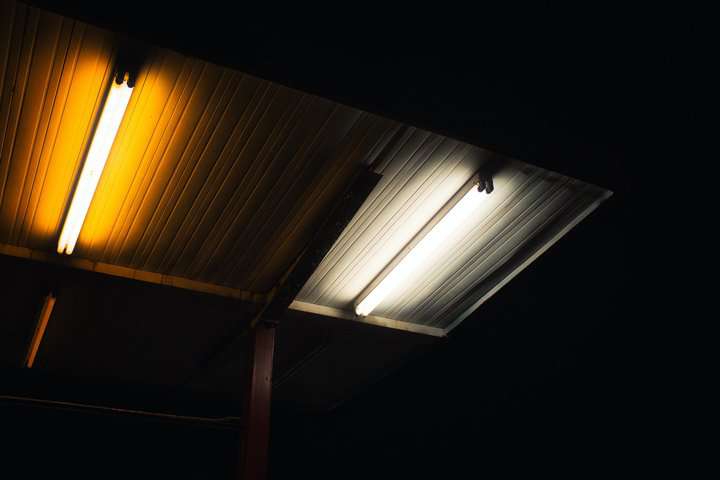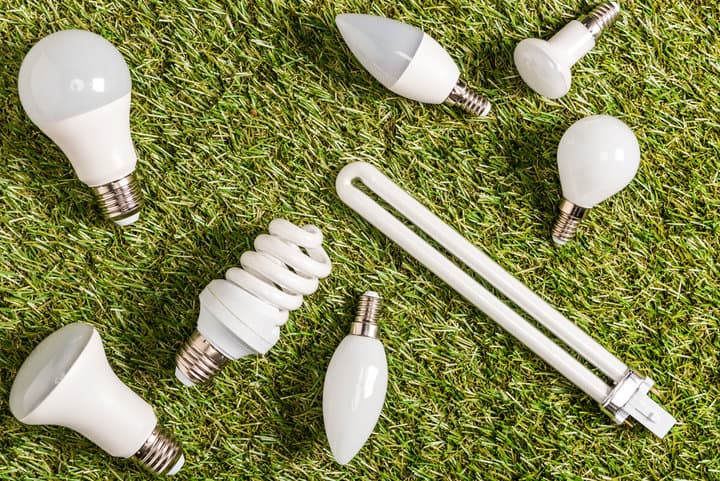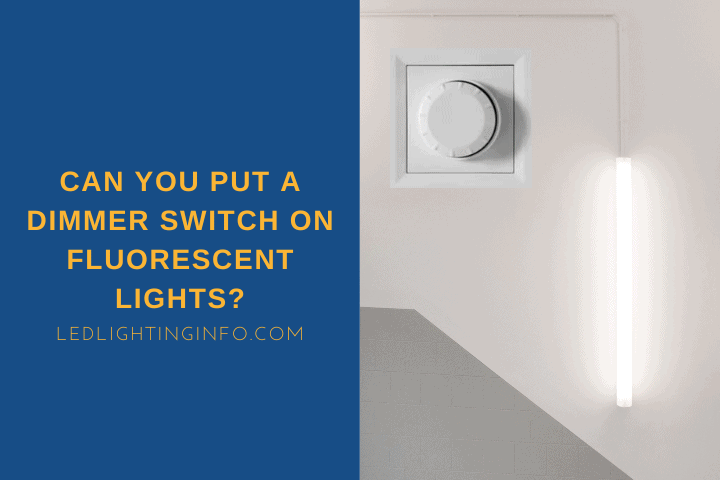Dimmer switches have been used for a long time in homes to help create a relaxing atmosphere.
They’re great for setting the mood, so you don’t have to have harsh lights when you want to wind down after a long day.
But while dimmer switches were originally designed for use with incandescent lights, there are now a lot of different bulbs used in the home (and in other spaces, too), one of which is fluorescent lights.
Can dimmers be used with those?
You can put a dimmer switch on fluorescent lights, but it’s not as simple as with other bulb types. You need a compatible dimmer designed for fluorescent or CFL lights and a dimmable ballast or dimmable bulbs for integrated lights.
To explain all of this, let’s take a look at:
- Whether dimmers can be used with fluorescent lights
- What you need to get it working
- How to wire a dimmer for fluorescent lights
Are Dimmer Switches Compatible With Fluorescent Lights?

It’s important to be careful when you want to dim fluorescent lights because a standard dimmer switch on its own isn’t compatible.
And that’s because of how fluorescent and CFL lights work when compared to other types of lights.
While older incandescent and halogen lights use a filament, and LED bulbs have a semiconductor that produces light, fluorescent and CFL lights rely on passing a current through a gas sealed inside the bulb.
That current isn’t just direct from the source either.
It’s managed by a ballast – a small device wired into the light fixture that controls it so that the bulb is lit without being overpowered.
It’s that ballast that interferes with how a standard dimmer switch works – which flips the current on and off hundreds of times a second.
Because the ballast is an intermediary managing the current to the light, it means that instead of the light dimming, it will flicker or not work at all.
However, that’s not the end – it is possible to dim fluorescent and CFL lights if you have the right equipment.
What Is Required To Dim Fluorescent Fixtures?

If you want to dim fluorescent lights, you will need a dimmer designed to work with these bulbs and a ballast that can be dimmed.
It’s important to note now that there are three different kinds of fluorescent lights:
- Standard fluorescent lights
- Integrated CFL lights
- Non-integrated CFL lights
Fluorescent lights are the long tubes you’ll be used to seeing when someone talks about these kinds of bulbs.
CFLs have tubes that are twisted to create a compact light bulb shape.
In integrated CFL lights, the ballast is built into the bulb base.
In non-integrated CFL lights, the ballast is separate and will be installed in the light fixture or close to it.
This means that you may not need to buy a separate dimmable ballast if you’re buying integrated CFL bulbs – you just need to make sure that you’re buying dimmable bulbs since the ballast they have built into the base will be a dimmable one.
In short, you need a compatible dimmer and a compatible ballast, separate or built into the bulb.
There are some brands that make both the dimmable ballasts and the switches to go with them – such as Lutron.
It’s a good idea to buy both together since you know they’re designed to be compatible, and you get the maximum dimming performance.
What I mean by that is – some CFL dimmers won’t work well when dimmed low.
They will switch the light off early, giving you a dead zone on your dimmer switch.
Using a high-quality matching dimmer and ballast from a reliable brand like Lutron, you’ll get the best possible performance from a CFL or fluorescent light so that you don’t have a dead zone.
It’s also worth noting that the other component of a fluorescent light fixture – a starter – is unaffected. So you don’t need to worry about swapping this out.
How To Wire A Fluorescent Dimmer Switch?
The first step whenever you’re doing wiring work is switching off the power!
It may seem obvious, but it’s so important that I will always include it as step one.
To wire a dimmer switch, you need to connect the live black wire on the dimmer to the live wire in the wall, which carries the current from the circuit breaker.
Then the red load wire should be connected to the load wire in the wall.
That load wire should be connected to the ballast. The ballast is then wired to the fluorescent lights.
You only need one ballast for multiple light bulbs within a fixture, and the ballast is usually wired into the light fixture.
Each fluorescent light will also be wired to a starter at both the positive and negative ends. However, this is often just built into the fixture.
Suppose you’re wiring a dimmer into an existing circuit. In that case, all you need to do is replace the existing light switch with a fluorescent-compatible dimmer switch and then replace the ballast with a dimmable ballast.
And if you’re using CFL lights with an integrated ballast, it’s even easier – just replace the light switch as described above, and then replace the bulbs with dimmable integrated CFL bulbs.
Final Words
While it’s not as straightforward as dimming older incandescent or halogen bulbs, or even LEDs (which can have their own issues with dimming), it is possible to have a dimmer switch on a circuit with fluorescent or CFL lights.
You just need to be comfortable understanding where in the light fixture the ballast is located and replace that at the same time as replacing the switch with a (compatible) dimmer switch.
It’s not a terribly difficult job.
And if you’re using integrated CFL bulbs, it’s even easier since you just need to replace the switch – and make sure your new bulbs are dimmable.
Do you have fluorescent lights on a dimmer switch, or are you planning on adding a dimmer to your existing lights?


